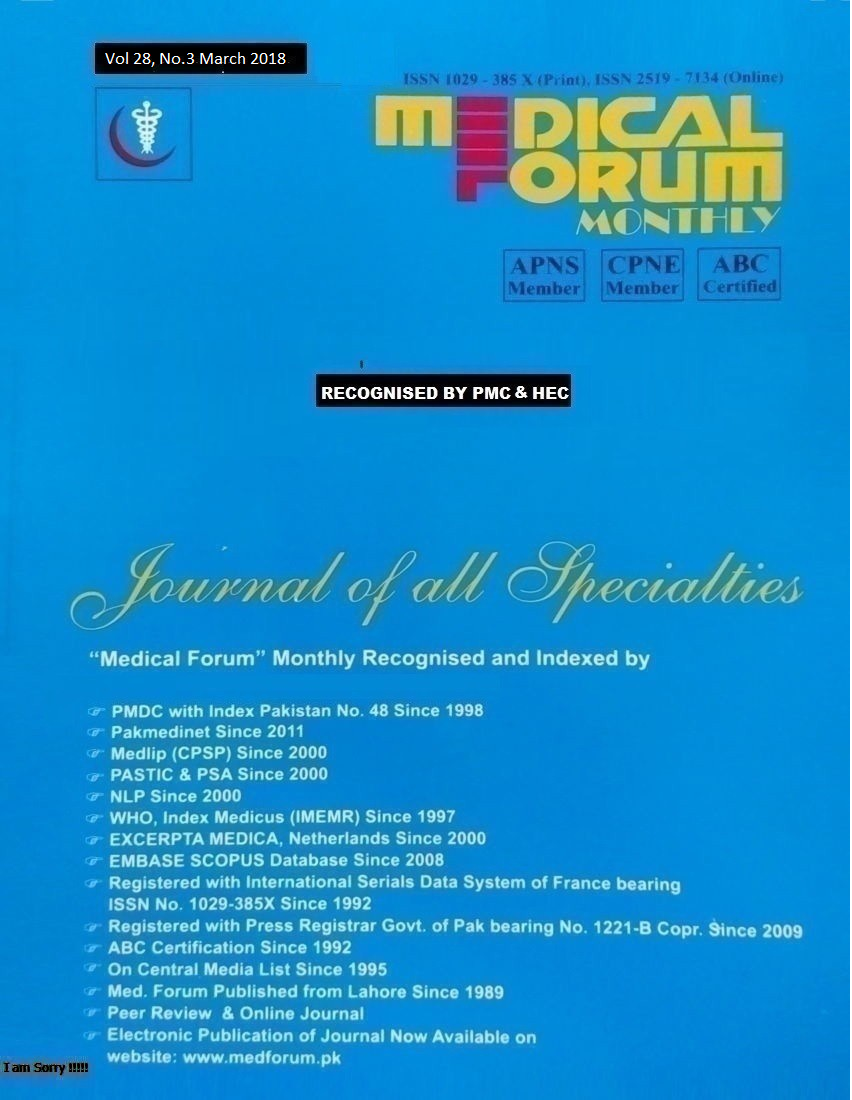
20. Functional Outcome of Diaphyseal Tibial Fractures Treated by Intramedullary Interlocking Nail, LUMHS Experience
Faheem Ahmed Memon1, Abbas Memon1 and Niaz Hussain Keerio2
ABSTRACT
Objective: To evaluate the functional outcome of Diaphyseal Tibial Fractures treated by Intramedullary interlocking nail by looking at the rate of infection, time of union and knee range of motions.”
Study Design: Non randomized controlled trial.”
Place and Duration of Study: This study was conducted at the Orthopedic Department of Liaquat University of Medical and health Science Jamshoro from January 2016 July 2016.”
Materials and Methods: “Fourty patients with diaphyseal tibia fractures (the fractures 7cm below the articular surface of knee and 4 cm above the ankle joint) were included in this study. Diagnosis was made on clinical grounds & radiological examination. Closed intramedullary nail were performed in all skeletally mature (the patients whose epiphysis has been united) patients with diaphysial tibial fracture. Intramedullary interlocking nail were performed in static method in all closed as well as open tibial fractures upto Gustillo Anderson type III-b. Skeletally immature patients, patients who showed signs and symptoms of infection at the site to be operated or elsewhere in the body, pathological fractures, having any medical illness which effect the bone healing, any previous knee or ankle disease and Gustilo Anderson open fractures with neuro-vascular injuries (Gustilo III-C) were excluded from the study.”
Results: “In our study there were 34 (85%) male, 6 (15%) female patients with mean age of 42 yrs.27 (67.5%) patients presented with close fractures, while 13 (23.5%) patients had open fractures. 10 (25%) patients were operated within six hours and remaining 30 (75%) were operated within 24hours. No patient had any infection either deep or superficial, at the end of our study. Wounds of all of the patients became clean at the end of 12th week. Full weight bearing was allowed to 39(9756%) patients at the end of 24th wks. At the end of our study most of our patient’s 40(100%) got knee range of motion from 0 – 135 degree. Fracture union was observed in 39 (97.5%) patints, while one (2.5%) patients did not show any sign of union at the end of study. The overall results were excellent in both close as well as open fractures.”
Conclusion: “Intramedullary interlocking nail is the treatment of choice in all diaphyseal tibial fractures. Both open and closed fractures can be managed effectively by this method of treatment. It provides early mobilization of the patient and decreases hospital stay. Early rehabilitation and early return to work makes it economical for the patients.”
Key Words: Tibial Shaft Fractures, Intramedullary Interlocking Nail, Intramedullary Fixation, and Diaphyseal Tibia Fracture
Citation of article: Memon FA, Memon A, Keerio NH. Functional Outcome of Diaphyseal Tibial Fractures Treated by Intramedullary Interlocking Nail, LUMHS Experience. Med Forum 2017;28(3):75-79.
